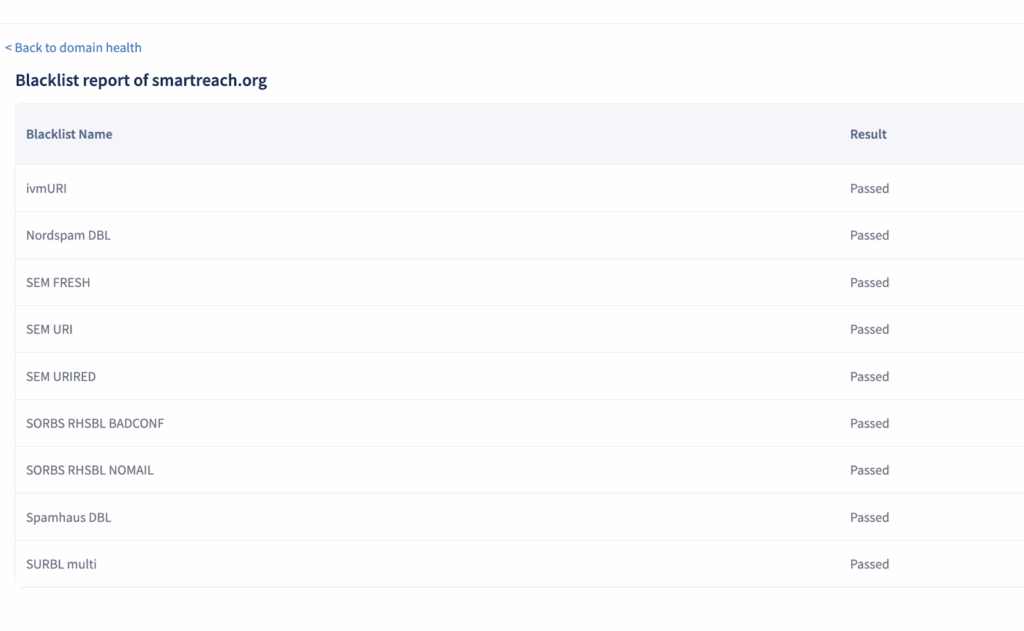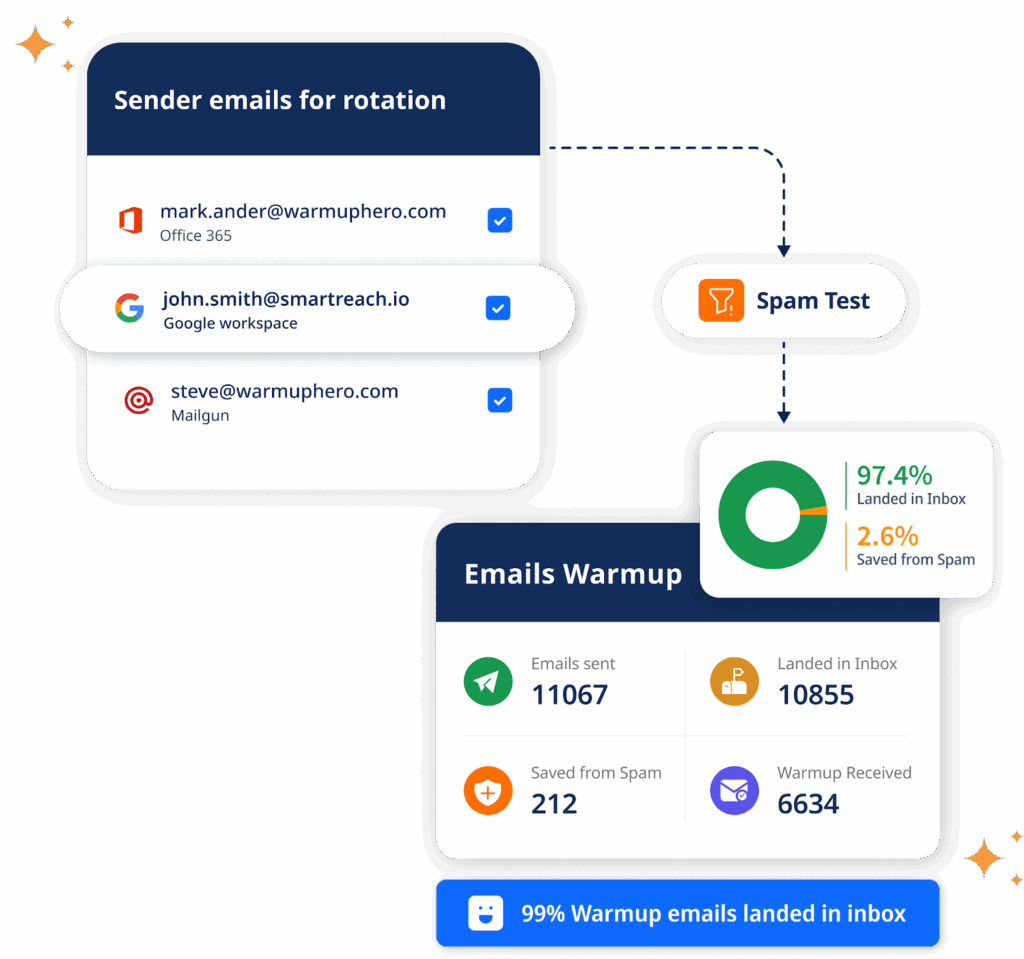How to Use Spam Complaint Metrics to Improve Sender Reputation
Every cold emailer knows one thing for sure: your emails are only valuable if they land in the primary inbox of the prospects.
But landing in the inbox depends heavily on sender reputation.
One of the strongest signals inbox providers track is spam complaints.
When recipients click your emails as “Mark as Spam,” it directly damages your sender reputation.

Too many such complaints, and your campaigns face throttling, spam filtering, or outright blocking (in extreme cases).
This guide explains how to use spam complaint metrics to identify problems, improve deliverability, and protect your sender reputation.
TL;DR (Quick Summary)
- Spam complaint metrics measure how often recipients mark your emails as spam.
- High complaint rates damage your sender reputation and email deliverability.
- Use detailed reports to find problem sources.
- Reduce complaints with better list hygiene, relevant content, and clear unsubscribe options.
- Monitor your reputation scores regularly and act on spikes.
- Proactive management ensures consistent inbox placement and higher response rates.
What are the spam complaints metrics?
Spam complaint metrics measure how often recipients flag your emails as spam.
Typically, this is shown as a complaint rate:

For example, if you send 10,000 emails and 50 recipients mark them as spam, your complaint rate is 0.5%.
What is the acceptable spam complaint rate for a healthy email campaign?
- Acceptable Rate ✅: 0.10% or lower (1 complaint per 1,000 delivered).
- Problematic Rate ❌: 0.30% or higher (3 complaints per 1,000 delivered).
Anything above 0.3% is a red flag.
It signals to email service providers(e.g., Gmail, Yahoo, Outlook), that your emails are unwanted, which can result in:
- Inbox deferrals
- Increased spam folder placement
- IP/domain blocking
How to identify the source of email spam complaints?
Before you can reduce spam complaints, you need to pinpoint exactly where they come from.
Spam complaint reports are your early-warning system, helping you fix problems before they damage your reputation.
Here’s a practical breakdown of how to identify sources of complaints:
1. Campaign-level reports
Review complaint rates by email campaign to spot problem areas. (Some email platforms allow it). Look for recurring patterns such as:
- Email subject lines that sound click-baity.
- Specific audience segments with higher complaints.
- Frequency spikes (e.g., daily sends after promising weekly).
2. ESP feedback loops (FBLs)
Many mailbox providers (Yahoo, AOL, Outlook, Comcast, etc.) support feedback loops that send data when recipients mark your emails as spam.
Use the FBL data to:
- Identify exact complainers and suppress those emails immediately.
- Detect bad email list sources (purchased lists, scraped data).
Tools you can use:
- Postmaster tools from Yahoo or Microsoft SNDS.
- Feedback Loop registration services like Validity’s Universal FBL.
Workflow:
- Register your sending domains/IPs with all major FBL providers.
- Automate complaint suppression (remove complainers within 24 hours from the campaign).
3. Engagement metrics correlation
High spam complaints almost always correlate with low email engagement.
Monitor the following email metrics:
- Low open rates → signal poor targeting or subject lines.
- High bounces → signals poor email list hygiene.
- Low click-through rates + high complaints → signals irrelevant content.
Tools to use:
- If you are using Gmail as mailbox provider, try Google Postmaster Tools (for Gmail sender performance).
- Microsoft SNDS for checking the Outlook deliverability.
- Additionally use the analytics dashboard of your email sending tool. (whichever platform your are using to run the campaigns)
How to use the engagement metrics:
- Compare engagement metrics with complaint rates weekly
- If a segment shows <10% open rate + higher complaints, sunset or re-engage that list with other channels such as LinkedIn or calling.
Read more: How to Segment Your Audience for Better Email Engagement
4. Abuse desk complaints (manual spam reports)
Some spam complaints come directly through mailbox providers’ abuse desks where manually report your emails as spam.
- Treat these spam complaints as critical red flags.
- Investigate the email campaign, email segment, and message that triggered them.
.💡Pro tip: Automate this process. For example, SmartReach.io can automatically process spam complaints and remove complainers from future email campaigns.
Pair this with Google Postmaster Tools for Gmail signals, and you’ll have near real-time complaint tracking across the board.
How to reduce email spam complaints for improved sender reputation?
Here are some of the best practices to reduce email spam complaints –
1. Practice better email list hygiene
Unwanted emails are the #1 driver of spam complaints.
- Use double opt-in for new subscribers.
- Regularly clean inactive or bouncing addresses.
- Avoid purchased or scraped lists at all costs.
Learn more: 7 Ways to build and grow a business email list from scratch
2. Improve email content relevance
Recipients mark emails as spam when they feel irrelevant.
- Segment email audience by persona, job title, or industry.
- Personalize email subject lines and opening sentences.
- Keep promises: if you said “weekly tips,” don’t suddenly send daily promos.
Read more: How to Segment Your Audience for Better Email Engagement
3. Optimize email sending frequency
Over-mailing causes fatigue and spam reports.
Test different cadences: weekly, bi-weekly, or monthly.
Allow users to set preferences instead of unsubscribing.
4. Make the unsubscribe option clear
If people can’t easily unsubscribe, they’ll use the spam button.
- Place a visible unsubscribe link.
- Offer a one-click opt-out.
- Honor unsubscribes immediately.
How to monitor sender reputation scores and set alerts for deliverability
A damaged reputation means lower email deliverability, more emails in spam, and fewer sales demos booked.
That’s why you must monitor your sender reputation proactively and react quickly to complaint spikes.
Here’s how to do it step by step:
1. Use reputation monitoring tools
These tools give you visibility into how mailbox providers view your sending behavior:
- Google Postmaster Tools (for Gmail users) → Shows spam complaint rates, IP/domain reputation, and authentication status.
- Microsoft SNDS (Smart Network Data Services) → Provides complaint and traffic data for Outlook and Hotmail.
You can use third-party tools also, like :
- Validity Sender Score → gives a 0–100 score of your domain/IP reputation.
- Postmark, Postmastery, or GlockApps → test inbox placement, monitor complaints, and track blocklists.
If you don’t want to spend anything, you can use SmartReach.io’s free internal global blacklist management system.

*How SmartReach.io manages email blacklists inside the platform
It runs in the background and informs when your email domains get blacklisted against the global blacklists and stops your email campaigns from further reputation damage.
2. Track spam complaint trends
You need to identify the spam complaint patterns over time:
- Log complaint rates, bounce rates, and sender scores weekly.
- Watch for slow degradation (e.g., complaint rate creeping from 0.08% to 0.15% over weeks).
- Compare different domains or IPs if you’re running multiple streams of outreach.
3. Set automated alerts for any spikes in the spam rate
Spam complaints can escalate quickly, so waiting a week to review reports isn’t enough.
Most reputation tracking tools (Google Postmaster Tools, Validity etc.) allow daily or threshold-based spam alerts.
- Set-up an alert in the system if the spam complaint rate exceeds 0.2% in 24 hours, trigger an alert.
- And pause sending from that domain/IP until the cause is diagnosed.
- Run checks in your email campaign for common issues like bad subject line, purchased email segment, over-aggressive follow-ups
4. Investigate and act immediately
When a spike in spam complaint happens, don’t ignore it.
- Step 1: Identify which campaign or segment drove the complaints.
- Step 2: Remove complainers from future sends.
- Step 3: Adjust messaging frequency or content relevance.
- Step 4: Re-test before sending at scale again.
Other proactive steps to maintain a positive sender reputation
- Warm up new domains and IPs gradually. Avoid sudden large volume of email sends.
- Authenticate emails with SPF, DKIM, and DMARC to build trust.
- Align your “From” info and subject line with the email’s actual content. Misleading subject lines drive spam complaints.
- Educate your SDRs and marketers on best practices for cold outreach. Consistency in approach prevents avoidable mistakes.
A strong sender reputation is built over time but can be lost overnight.
And using the right platform for sending email campaigns matter too!
With SmartReach.io, you get a built-in deliverability suite that include automated complaint handling, domain warmup, and advanced spam monitoring.

This ensures your cold emails stay compliant, avoid spam folders, and reach the inbox consistently.
Try SmartReach.io for free (no credit card needed)
Frequently Asked Questions
Q1. What is an acceptable spam complaint rate?
Aim for below 0.1%. Anything higher than 0.3% can threaten deliverability.
Q2. How do spam complaints impact email deliverability?
High complaint rates tell inbox providers your emails are unwanted, leading to filtering or blocking.
Q3. Can I see who marked my email as spam?
Yes, through feedback loops from certain ISPs. But respect privacy laws when using this data.
Q4. How fast can sender reputation recover after high spam complaints?
Recovery can take weeks. Consistent good practices—clean lists, relevant content, and low complaints—help speed it up.
Q5. What’s better: unsubscribes or spam complaints?
Unsubscribes are always better. They signal disengagement without damaging your reputation.



